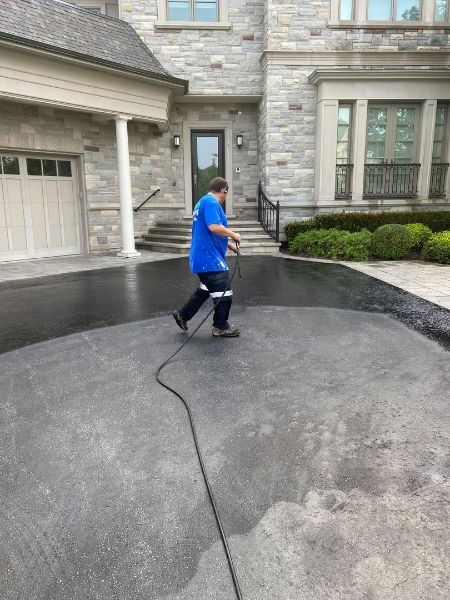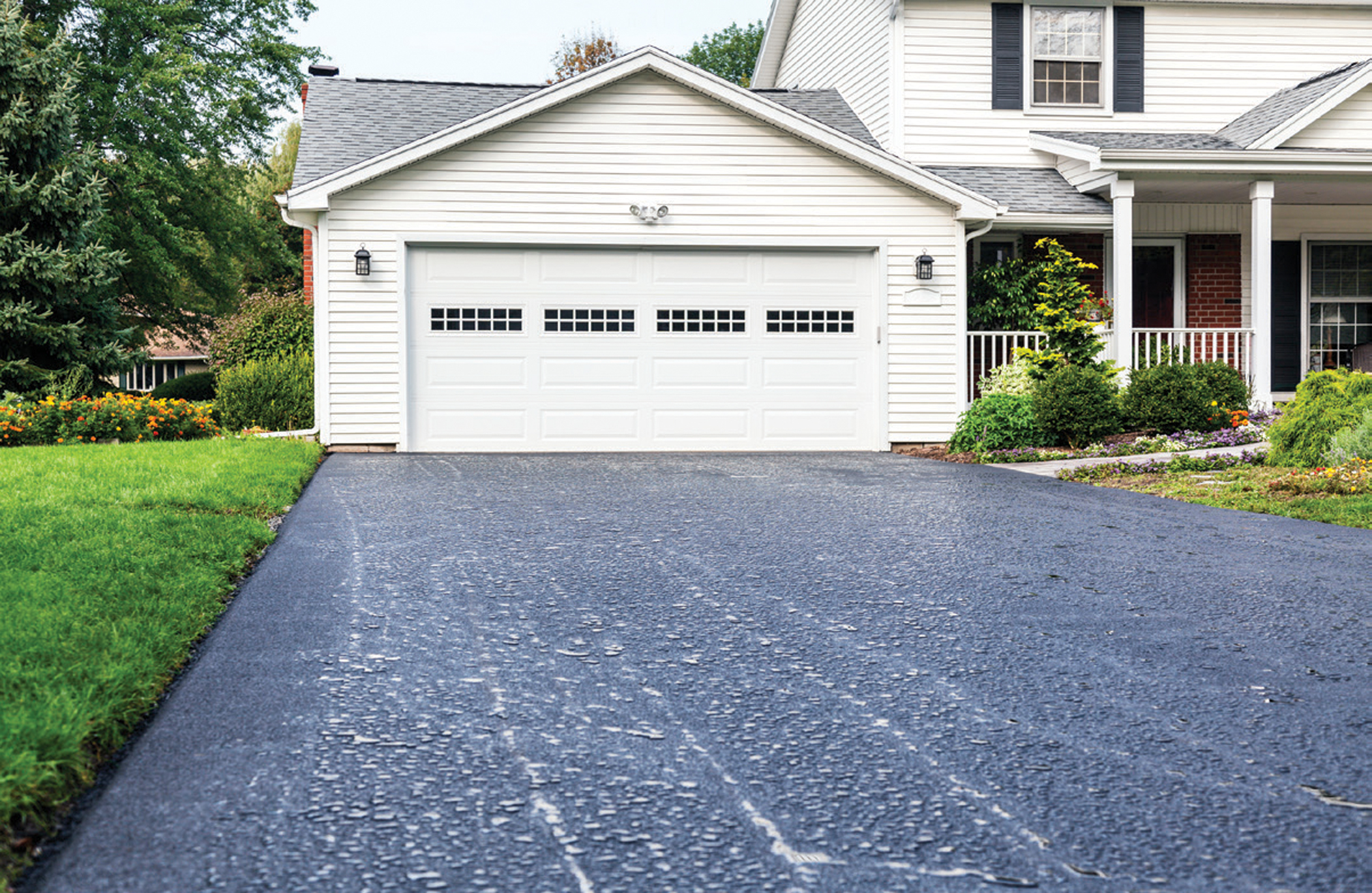Optimize Financial Investment Returns: Angled Parking Lot Perfection with Asphalt Sealing
Warm Mix Asphalt: A Lasting Solution for Sidewalk
Hot Mix Asphalt (HMA) has actually become a leading lasting option for sidewalk remedies, using a myriad of environmental benefits and ingenious modern technologies. Its capacity to recycle products and decrease power usage presents an engaging situation for its adoption in roadway building and construction tasks. The long-term efficiency and longevity of HMA make it a recommended choice for framework advancement. As the demand for environment-friendly building and construction methods expands, discovering the nuances of HMA's sustainability can offer beneficial insights right into the future of sidewalk services.
Ecological Advantages of Warm Mix Asphalt

Furthermore, Warm Mix Asphalt assists to alleviate urban warmth island results. Its dark shade absorbs sunshine, lowering the quantity of heat reflected back right into the atmosphere compared to lighter-colored pavements. This can lower ambient temperature levels in metropolitan locations, lowering the need for air conditioning and ultimately reducing power consumption.
Additionally, Warm Mix Asphalt adds to enhanced stormwater management. Its porous nature enables water to reenergize and infiltrate the pavement groundwater products, minimizing runoff and the risk of flooding. These environmental benefits make Hot Mix Asphalt a sustainable selection for leading roads and freeways.
Power Efficiency in HMA Manufacturing
Is power performance a crucial consider the production of Warm Mix Asphalt (HMA)? Definitely. Power plays a significant function in the manufacturing of HMA, impacting both price and ecological sustainability. One crucial aspect of energy effectiveness in HMA manufacturing is using warm mix asphalt (WMA) modern technologies (commercial parking lot paving). WMA enables for the blending and placement of asphalt at lower temperatures compared to conventional hot mix asphalt, leading to lowered power usage during production. This process not only lowers gas use however additionally reduces greenhouse gas emissions, making it an extra eco-friendly alternative.
Moreover, innovations in plant innovations have actually led to more energy-efficient HMA manufacturing procedures. By enhancing power use in HMA production, the market can lower its carbon footprint while maintaining high-grade sidewalk materials.
Recyclability of Hot Mix Asphalt
The recyclability of Hot Mix Asphalt (HMA) is an essential element of its sustainability and long-lasting ecological effect. HMA is one of one of the most recycled products in the United States, with over 100 million tons of recovered asphalt sidewalk (RAP) being reused each year in new sidewalk building. Recycling HMA supplies a number of environmental advantages, such as decreasing the demand for virgin materials, lowering energy usage throughout production, and decreasing the quantity of waste sent to garbage dumps.
The process of reusing HMA entails milling the existing sidewalk, squashing it into smaller sized items, and blending it with brand-new aggregate and asphalt binder to create a recycled mix. This recycled mix can typically perform in addition to and even much better than traditional HMA, while calling for fewer raw products and producing reduced greenhouse gas discharges. By including RAP into brand-new sidewalk projects, road companies can preserve all-natural resources, reduce prices, and decrease the ecological footprint of roadway building and construction and upkeep tasks. Overall, the recyclability of HMA plays a click over here substantial duty in advertising lasting methods within the pavement industry.

Long-Term Efficiency of HMA
Asphalt pavements show durability and resilience over a prolonged period, reflecting the lasting efficiency of Hot Mix Asphalt (HMA) In addition, improvements in HMA technology, such as the use of polymer-modified binders and cozy mix asphalt, have even more enhanced the durability and long life of HMA sidewalks. By prioritizing high quality building and upkeep methods, HMA proceeds to confirm itself as a sustainable and economical service for durable sidewalk facilities.

HMA: Toughness and Sustainability
Showing both sturdiness and sustainability, Hot Mix Asphalt (HMA) has actually become a foundation in the building and construction of lasting sidewalk infrastructures - commercial parking lot paving. HMA's sturdiness stems from its ability to hold up against hefty loads, severe weather conditions, and high web traffic volumes, making it a reliable option for roadways, highways, and airport runways. The structure of HMA, which usually consists of accumulations, binder, and filler, plays a crucial function in boosting its longevity and resistance to damage
Furthermore, HMA's sustainability exists in its recyclability and energy-efficient manufacturing process. The capability to recycle redeemed asphalt pavement (RAP) in brand-new HMA blends reduces the need for virgin products and reduces the environmental impact of sidewalk building and upkeep. In addition, the energy effectiveness of generating HMA lies in its reduced mixing temperature levels compared to various other sidewalk materials, leading to decreased energy consumption and greenhouse gas discharges.
Conclusion
In final thought, warm mix asphalt (HMA) uses a lasting option for sidewalk with its ecologically pleasant qualities. HMA's recyclability, energy performance in production, and lasting durability make it an environmentally friendly option for road construction.
HMA is one of the most recycled materials in the United States, with over 100 million tons of redeemed asphalt pavement (RAP) being recycled annually in brand-new sidewalk building and construction.The process of reusing HMA includes grating the existing sidewalk, crushing it into smaller sized pieces, and blending it with brand-new aggregate and asphalt binder to produce a recycled mix.Asphalt sidewalks show toughness and resilience over an extensive period, reflecting the long-term efficiency of Clicking Here Warm Mix Asphalt (HMA) Additionally, developments in HMA modern technology, such as the usage of polymer-modified binders and warm mix asphalt, have even more boosted the toughness and durability of HMA sidewalks. The my blog capacity to recycle recovered asphalt sidewalk (RAP) in new HMA blends lowers the demand for virgin products and minimizes the ecological effect of pavement building and construction and maintenance.